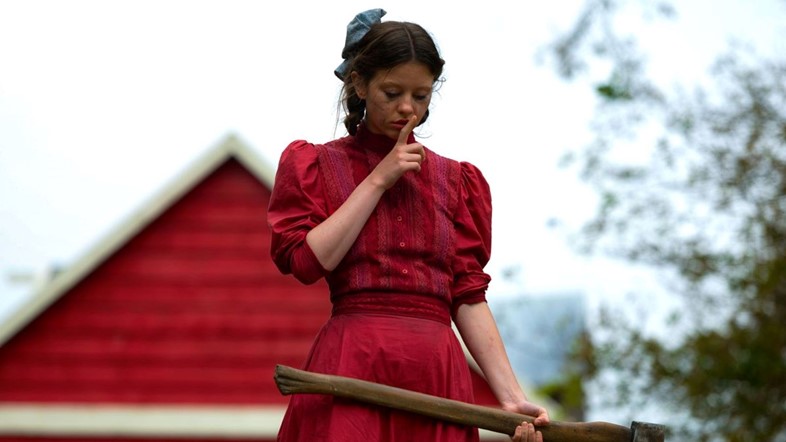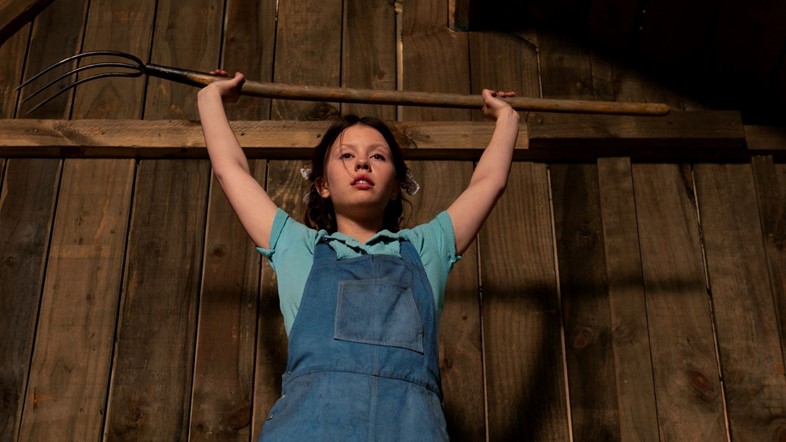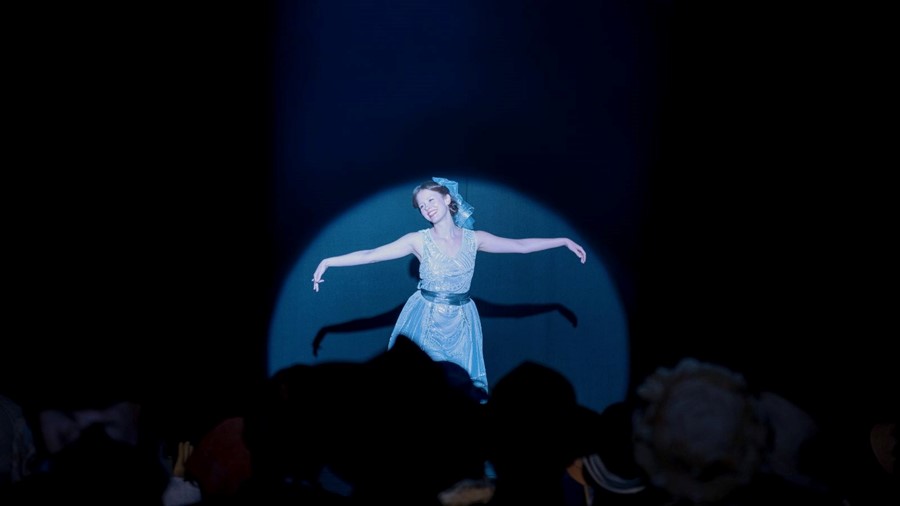As Pearl hits UK cinemas, Ti West talks about collaborating with Mia Goth, and why he wanted to make a movie that was inspired by the craft of filmmaking
Mia Goth blows through Ti West’s soon-to-be-cult slasher prequel Pearl like the tornado in The Wizard of Oz, tearing up the scenery as its axe-wielding lead in a turn that frequently borders on genius.
Sadly, the Academy is not in the business of handing out baubles to super-campy horror films about fame-hungry psychopaths – just ask Bette Davis, RIP. But horror fans know a true original when they see it, and Pearl is most definitely that, plunging us into a Technicolor dream of Hollywood’s past before painting it in varying shades of bright red. The whole film is like an expertly mounted joke, until suddenly it’s not, with Goth’s performance imparting a strange inner life to one of horror’s most memorable characters in a long, long time.
We spoke to West – who persuaded A24 to back the film as a two-for-the-price-of-one deal from a script he wrote with Goth in quarantine – about Pearl’s making, and the joys of creating an “accidental trilogy”.
Alex Denney: First up, I have to ask: does this year’s best actress Oscar rightfully belong to Mia?
Ti West: I mean, I’m biased, but from the very beginning of shooting Pearl I was like, “This is a super special performance,” so it certainly would have been cool to see it. But she’ll get there.
AD: Can you talk us through how Pearl came about as a sequel to X?
TW: We were just about to make X when Covid happened, so we ended up making it in New Zealand because that was the safe place to be. We hired a location scout and found an area that looked like Texas, spent money to build the farm, and off we went. And really, it just seemed like a shame to tear it all down [afterwards] – to build Texas for hundreds of thousands of dollars and then go home and sit on our asses. That seemed like a terrible plan. So it was like, how do we get more out of what we’re doing here? And I thought, “What if we can make two movies?”

AD: And the studio went for it immediately?
TW: I pitched them my idea and they were like, “That’s great, but maybe we should just make X and see how it does.” Which was a very reasonable response, but I really felt like we should make these movies [back to back]. To get into New Zealand we had to do two weeks of quarantine in a hotel, so I said, “What if I write the script in quarantine? Would you consider it?” Because I had two weeks locked in a room and it was like, if there was ever a time to crank out a script, it’s now. I don’t know if they believed me, but they said yes!
AD: What was Mia’s input into the movie?
TW: Without Mia the movie wouldn’t exist, because she is Pearl. And so it just seemed to me that we had to figure out who this person was together. I would say to her, “Give me a list of things you’ve always wanted to do in a movie, and [I’ll think] how to incorporate them.” Or I’d write a sentence to start a conversation, [then ask Mia] to set a timer on her phone and write a stream of consciousness for 30 minutes and send me whatever she had. One of the first things I remember her saying was in the scene [where Pearl is washing her father in the bathtub]. She was like, “What if I pinch him while he’s in the bath?” And I was like, “Oh that’s cool, let me put that in and figure out where we go from there.”

AD: The long take of Pearl confiding in Mitsy is brilliant, it just seems to suck all the air right out of the film. What was its significance for you?
TW: I knew this was a different kind of movie than X, and any sort of bombastic climax would have left it feeling like an exercise in style. And so we wrote that scene of her baring her soul and we were like, “Let’s see what Mia does.” Mia only has one speed; it’s like pedal to the floor. When you say ‘action’ she’s gone, and when you say ‘cut’ she comes back. My biggest job on the day was just to keep everyone out of her way because there was a point in this monologue where I didn’t want to cut any more, and once she said that line it was like doing a stunt. If someone sneezed or the light flickered, it would kill it. So it was very much like, “If anyone’s got a problem, speak now. Because once the snowball starts rolling we can’t stop it.”
AD: As a stylistic exercise the film is so much fun. Why did you decide to tell Pearl’s story this way?
TW: With X, I wanted to make a movie where the craft of filmmaking was at the forefront. And one way to do that was to have it about people making a movie, and do it in the auteurish, exploitation filmmaking style of the 1970s. With Pearl I wanted to do something totally different, but something equally inspired by the craft of cinema. [Pearl is] not someone who is going to scrappily try to make a movie, she’s someone who’s going to look at what her life could be in the movies on a pedestal. And that, to me, evoked this golden age of Hollywood and Disney, this naive aesthetic, which seemed like an interesting way to go into a movie about a psychopath, for lack of a better term. Maxxxine, the third movie, is different also – that’s been the fun of this ‘accidental trilogy’, in a way. Now I’m just trying to stick the landing!
Pearl is out in UK cinemas now.
